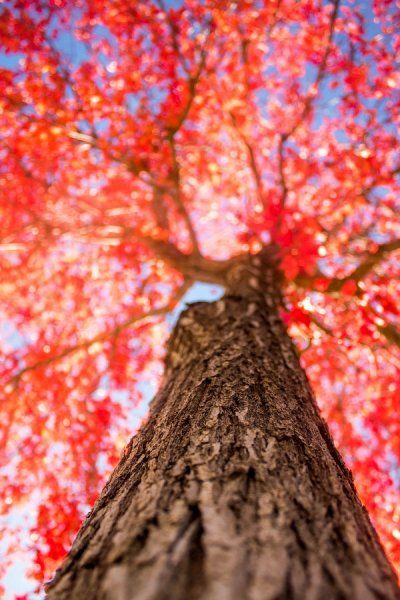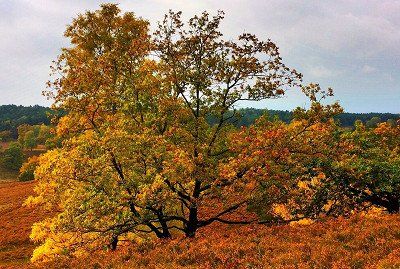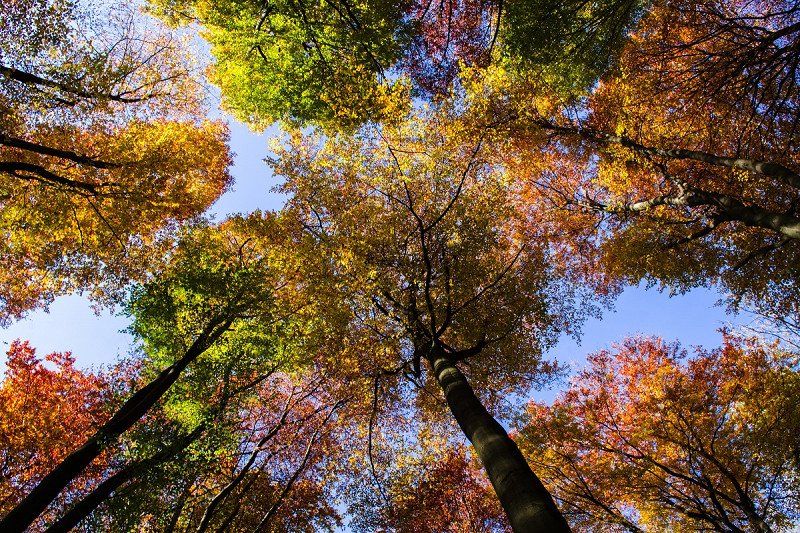Even though it may not look like it on some days, the sun does occasionally pamper us with its warm rays in October and November while bathing the local forests with their brightly coloured leaves in a particularly beautiful light. Perfect for a camping trip to the great outdoors and a slow travel holiday in autumn in a mobile home – with lots of fresh air and social distancing thrown in! Freeontour has selected four places in Germany that are extremely colourful in autumn and will inspire you with their very different autumn landscapes.
Admittedly, when we talk about Indian summers, the breathtakingly impressive natural spectacle in Canada usually springs to mind, when huge forest areas shine in bright hues of yellow, orange and red in autumn. But you will also find many beautiful deciduous forests in Germany cloaked in colourful robes at this time of year – even though the clothing style may be slightly different than in Canada. From maple trees, beeches and oaks to chestnut trees, grapevines and ivy: the landscape is rich in deciduous trees and plants – and when autumn comes around, they all want to show off their vibrancy. Read Freeontour's tips on places to visit in Germany for a day-trip or holiday in autumn with a caravan or mobile home:

Tip #1: WeltWald Harz – red foliage, Native Indians and redwoods
If you can't travel to Canada, you can at least treat yourself to a touch of Indian summer in the Upper Harz mountains as the WeltWald Harz near the village of Bad Grund is home to over 600 species of plants from all over the world. Moreover, this nature park is one of the largest botanical arboretums in Germany. Almost 300 different tree species can be found here – including exotic species from the USA and Canada as well as from the Mediterranean region, Western Siberia and Asia. People like to take walks through the 100-hectare forest park in autumn when the typical maple, birch and oak trees turn into a bright sea of different shades of red.
But it's not only the colour of the trees here that is impressive, their size is equally stunning. Surrounded by giants, you are bound to feel tiny on the Redwood Trail. Winding adventure trails in the Forests of North America bring visitors closer to the flora, fauna and history of this continent. And there is even a Native Indian shrine with totem poles among the trees. In addition to the WeltWald, Bad Grund also offers an enchanted legend and fairy tale valley, whose lovingly handcrafted fairy tale houses make it popular with families. An excursion to the Iberg Dripstone Cave experience centre is also exciting. Last but not least, the Harz region has many great hiking tours, e.g. the Harz Witches' Trail.
Tip #2: Bears, lynxes and fantastic views in the Bavarian Forest
The Bavarian Forest also promises picturesque excursions under a colourful canopy of leaves. Together with the adjacent Sumava National Park in the Czech Bohemian Forest, it forms the largest continuous forest reserve in Central Europe. With a little luck, you might even come across one of the many forest-dwelling animals roaming about in the wild. Wolves, bears, lynxes, eagle owls, otters, wild boars, elk and even bison – a rare European buffalo species – live in the national park. But don't worry, most of these forest dwellers are at home in the animal area of the national park and tend to be extremely shy in the wild.
The Bavarian Forest has more than 500 km of marked trails – therefore, plenty of hikes to enjoy the autumn splendour. Although spruce is one of the most common tree species in the Bavarian Forest, the European beech is close on its heels, and the different types of moss and fern can fall back on a bright spectrum of colours at this time of year. Among the many hiking routes, a tour to the treetop path near Neuschönau is also ideal for an autumn day trip. Thanks to the wooden walkways beautifully integrated in the natural surroundings, you can walk 8 to 25 m above the forest floor and see the forest and its dwellers from a different perspective. The highlight of the 1.3 km tour is the 44 m high wooden dome, from which you can enjoy spectacular panoramic views of the Bavarian Forest.

Tip #3: Magical autumn light in Lüneburg Heath
Lüneburg Heath has its very own charm in autumn. After having been covered by a reddish purple veil of blossoming heather in late summer, it now shines in the golden northern German autumn light. There are no mountains far and wide, which makes the horizon seem all the broader. And the main travel season is over too, so you can enjoy the heather all by yourself. This encourages long walks and hikes, e.g. along the Heidschnucken Trail, as well as wonderful bike tours through the golden yellow beech forests. A well-signposted, extensive cycle network runs through the colourful deciduous forests. It may seem calm here, but it does not necessarily mean it is silent. While the chestnuts and acorns crack under hiking boots, the loud roar of the many red deer reverberates through the huge forest areas of the South Heath and can be heard from afar. Autumn is rutting season in the heath, and the deer roar loudly to get rid of the competition and to keep the herd together. It is also a thrilling place for bird fans: cranes, black storks and geese can be observed from viewing towers at the Meißendorf Lakes in the South Heath Nature Park and at Lake Jastorf in the Uelzen district. Another highlight are the autumn and harvest markets in the traditional villages in the surrounding area where you will be able to find seasonal products as well as local handicrafts.

Tip #4: Indian summer in the Azalea and Rhododendron Park Kromlau
Germany's largest rhododendron park is located in the Saxon town of Kromlau in the Görlitz district. Most visitors come here in spring when the rhododendrons are in bloom. But the park is also a worthy hiking and day trip destination in autumn when the red leaves of the bushes blend harmoniously into the surrounding deciduous forests. Moreover, the park has another attraction: the Rakotzbrücke, also known as the Devil's Bridge. This mysterious, sombre-looking bridge made of basalt was commissioned in 1860 and took ten years to build.
The Devil's Bridge owes its mystical name to its unusually thin arch spanning the 35 m wide Rakotz Lake. People once believed that only the devil could build such a thin bridge and that he would lay in wait to lead his victims to the afterlife. The bridge was hidden by scaffolding during the last few years for renovation work, but as of this year it can be seen in its full glory again. Not far from the bridge, the basalt organ in Rakotz Lake and the grotto next to the Rakotzbrücke have also been completely restored and make a great alternative background for photo motifs. You can also go on numerous hiking trails, visit Kromlau Castle from the 19th century and travel on the historic forest railway that used to run between Görlitz and Berlin in the 1860s.


